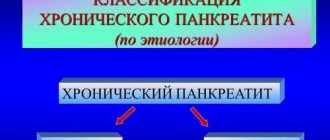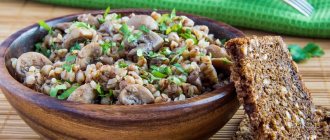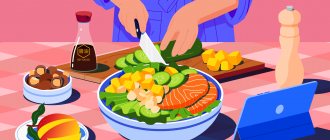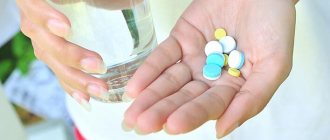Cardiac structures, despite a high margin of safety, are fragile. There are many disease-causing phenomena affecting this system, the consequences are often fatal, and variations are possible.
A symptom such as stabbing pain in the heart determines not only cardiac problems. If there are any, the manifestation does not mean anything, but allows you to react in time and consult a doctor.
In many clinical situations, the pathology is not at all where it is expected to be seen. Diagnostics under the supervision of several specialists is required; one cardiologist will not be enough.
Possible damage to the gastrointestinal tract, problems with the lungs and muscle structures. All these are “dioceses” of different doctors. It is likely that the diagnosis will be lengthy and complex.
First of all, it is recommended to consult a therapist if we are talking about an adult or show the child to a pediatrician.
In itself, tingling of the heart is an alarming symptom, but it occurs in the later stages of disease processes. Usually this is not the only sign; a comprehensive assessment is needed.
Cardiac reasons
Relatively few in number. According to medical statistics, only 12% of clinically recorded situations are determined by problems with the heart and blood vessels themselves.
Usually these are relatively dangerous pathologies that threaten life and health.
Cardiac ischemia
It develops independently, but more often becomes the result of some third-party condition, cardiac or other.
The essence of the process is insufficient blood circulation in the myocardium. This results in a decrease in the efficiency of blood ejection and hemodynamic deviations.
Stitching pain in the heart is the result of gradual degeneration and death of cardiomyocyte cells. But this symptom is not always observed, in approximately 15% of clinical cases. Other situations pass without discomfort.
Myocardial infarction
If the heart hurts, intensely, pain radiates to the left arm, shoulder blade, stomach and epigastric region, pressure, shortness of breath occurs, this is a direct indication of acute necrosis of muscle tissue.
The process is accompanied by severe changes in the functioning of the heart, hence a possible fatal outcome in the short term.
It all ends with cardiosclerosis, that is, the replacement of functional tissues with connective tissues that are not capable of maintaining activity and contractility. Over the course of 1-6 months, a relapse is likely, potentially more lethal than the first case.
Cardiomyopathies
A group of heterogeneous pathologies accompanied by anatomical changes in the myocardium.
The process is rarely accompanied by pain; if it is present, it is only in the later stages, as part of third-party syndromes and processes. Rarely does cardiomyopathy occur in isolation; more often it is combined with other diagnoses of the same kind.
Angina pectoris
Strictly speaking, this is not really a disease. More like a symptom complex. As part of the phenomenon, the discomfort is sharp and extremely intense, occurs suddenly, and is characterized by additional symptoms.
Congenital and acquired heart defects
What kind needs to be clarified through objective research. At a minimum, a physical assessment, electrocardiography and ECHO-CG are performed. If there are suspicions of processes, the presence of such, but in a poorly developed stage, regularly, in dynamics. Every six months to a year.
Atherosclerosis of the aorta and its branches
Formation of lipid plaques on the walls of blood vessels. Pain appears in the late clinical period, when the nature of circulatory disorders is such that blood pressure rises to critical levels.
Arrhythmias of various kinds
Paroxysmal tachycardia, extrasystole, fibrillation. If these processes are prolonged, pain occurs. In other cases, they are rarely found, in no more than 10% of situations.
Endocarditis and similar inflammatory processes
Infectious or autoimmune type. An exceptional option when pain is constantly present.
Cardiac causes are relatively few in number, but pose a significant danger to life or, at least, health.
On the other hand, it’s good that there is discomfort. The patient manages to seek help in a timely manner and is aware of problems in the body.
Types of pain
Abdominal pain can be very different:
- Acute and chronic . Acute pain occurs suddenly, chronic pain develops gradually, its intensity increases step by step - sometimes over several weeks. In this case, a special type is formed by chronically recurrent abdominal pain. They can suddenly make themselves felt, and then also suddenly pass and resume after a certain period of time.
- Tonic and clonic . With tonic pain, the muscles are very tense, compacted areas appear on the abdomen, and uncontrolled muscle contraction is observed. Tonic pain is accompanied by fairly rhythmic spastic spasms.
- Burning (cutting) and aching – reminiscent of hunger.
The localization of pain can be the abdominal cavity, hypochondrium, areas above or below them.
Extracardiac factors
Much more diverse.
Diaphragmatic hernia
Protrusion of anatomical structures into the lumen of the abdominal cavity. Occurs at any age, usually against the background of intense physical activity, overeating, and anatomical abnormalities during fetal development.
A relatively common phenomenon, it occurs in every thousand people on the planet. Almost does not make itself known, until a certain moment.
Chest pain is weak, aching, stabbing. Discomfort increases when eating or mechanical activity.
Inflammation of the pleura
This is the membrane lining the lungs. Rarely acts as an isolated process. More often accompanied by pneumonia or, at a minimum, bronchitis.
The complex phenomenon requires urgent medical care under the supervision of a pulmonologist. If your heart hurts (presumably), you need to take a couple of deep breaths.
Problems with the pulmonary system will reveal themselves at one point. Against the background of movements, discomfort increases significantly, which does not happen with pathologies of cardiac structures. This method can be used independently to determine the cause early.
Intercostal neuralgia
One of the most common factors of pain syndrome. With intercostal neuralgia, it always seems that the heart is pounding when inhaling.
Discomfort is localized in the chest. In fact, special nerve fibers and muscle structures become inflamed.
Pathology can only be delimited objectively, based on the results of ECG, ECHO and other techniques. You can suspect something is wrong by again taking a deep breath. The pain will intensify. This does not happen with cardiac pathologies.
Fractures, bruises of ribs, cracks
They arise against the background of certain phenomena, the connection with which the patient can trace himself. Again, heart damage is also possible. Diagnostic measures put an end to the issue.
Osteochondrosis of the thoracic spine
Inflammatory, degenerative diseases of the musculoskeletal system. It is extremely difficult to distinguish it from cardiac pathologies.
Radiography is used as the main method of verification and differential diagnosis.
Stomach problems
Like gastritis, ulcers of the mucous membrane. The tingling sensation becomes stronger when eating food, taking anti-inflammatory medications, and others.
Treatment of colitis
Treatment of the disease is complex.
The treatment regimen includes:
1. Diet for colitis. Nutritional correction is necessary at any stage of the disease. It allows you to minimize the load on the organs of the gastrointestinal tract, stimulates the healing processes of the mucous membrane and normalizes peristalsis. Therefore, it is necessary to exclude all difficult-to-digest foods from the diet.
List of prohibited products:
- legumes;
- smoked meats;
- meat and broths based on it;
- sugar;
- salt, vinegar;
- fruits, vegetables and a number of others.
The amount of salt should not exceed 8-10 grams. All dishes must be consumed boiled, stewed, pureed. Meals should be fractional (you need to eat food often, but in small portions). There are no restrictions on water intake, and on the first day of diarrhea it is recommended to increase the amount of fluid consumed.
During periods of exacerbations, it is necessary to create the most gentle conditions for the digestive organs and strictly follow all the recommendations of the attending physician. To relieve symptoms of the acute form of the disease, a 3-5 day diet is usually sufficient.
2. Drug therapy is aimed at stopping inflammatory processes and their manifestations. Involves taking the following pharmacological medications:
- Antimicrobial agents and antibiotics - for infectious etiology;
- Astringents and enteroseptics - to eliminate diarrhea;
- Antispasmodics to eliminate pain symptoms;
- Probiotics and prebiotics to normalize intestinal microflora;
- Antihelminthic drugs - if helminth damage has been detected.
Ulcerative nonspecific colitis requires a special approach to therapy. This form of the disease is of autoimmune origin, therefore, specific drugs are prescribed for treatment (aminosalicylates, cytostatics, glucocorticosteroids and a number of others), and requires dynamic lifelong monitoring by a gastroenterologist.
3. Surgical treatment. Surgical intervention is indicated in exceptional cases when medications and other treatments do not help and there is a danger to the health and life of the patient. In addition, operations are performed to relieve the main complications of colitis (intestinal obstruction, internal bleeding, peritonitis and others).
How to distinguish cardiac from extracardiac causes?
Differential diagnosis is carried out by objective methods, under the supervision of a group of specialists.
Primary measures fall on the shoulders of the therapist. Common sense rules suggest when there are cardiac problems:
- If you feel a stabbing pain in the area of the heart, there is already reason to exclude cardiac pathologies. More often, against the background of serious illnesses, they are cutting, burning or pressing. They radiate (radiate) to the back, left arm (it seems that the discomfort is traveling through the veins). The potentially dangerous process is accompanied by shortness of breath, weakness, and sweating. The only exception is angina pectoris.
- If possible, you should try to find a body position that will be more comfortable. Usually this is the left side. In such a situation, there is also no need to talk about cardiac problems.
- You need to take a deep breath several times, bend over, move your arms, legs, back, and chest. When pain increases, we are not talking about heart problems. Either the lungs are to blame, or neuralgia. An extreme option is osteochondrosis of the spinal column. As a rule, it is neglected, especially if the discomfort practically does not go away.
- When taking drugs based on organic nitrates or phenobarbital (Valocordin), only heart pain is eliminated. In the absence of an effect, a different etiology of the process is possible, but this is not an axiom.
- If discomfort develops progressively, there is a high probability of cardiac pathologies. When the pain periodically shoots through and disappears, it is again impossible to talk about problems of the muscle organ.
Doctors are guided by the same points when collecting anamnesis and identifying complaints. As the condition is assessed, certain studies are prescribed.
So, why does the heart hurt? The distribution of processes is approximately this:
- Cardiac problems - 12% of cases.
- Gastroenterological diseases - 20%.
- Intercostal neuralgia - 40%.
- Osteochondrosis of the thoracic spine - 20%
- Other factors not listed above - 8% of situations.
It’s better to figure it out in a hospital, especially if there are suspicions of cardiac pathologies.
Hernias
Often abdominal pain is caused by peritoneal hernias. They can be umbilical, inguinal, diaphragmatic. Umbilical hernias are more often formed during pregnancy or in the postpartum period, inguinal hernias - with excessive stress, diaphragmatic hernias - defects of the abdominal wall that form as a reaction to improper bowel function, an incorrectly selected corset, or heavy lifting. The insidiousness of diaphragmatic hernias is that at the initial stage of the disease, a person believes that he has typical gastritis - with heartburn and belching, but traditional therapy does not provide treatment, and ultrasound shows that the cause is not inflammation of the stomach, but precisely the presence of a hernia. In toga, to combat pathology, it is not necessary to relieve inflammation or eliminate spasms, but to undergo surgical treatment, which is aimed at strengthening the abdominal wall.
Diseases of the gallbladder and bile ducts
A special group consists of diseases associated with the gallbladder and bile duct.
- Cholangitis . Inflammation of the bile ducts. The pain is unbearable. Mainly on the right side. It is complicated by the fact that it requires not only quick relief from the attack of pain itself, but also normalization of blood pressure.
- Cholecystitis . Acute pain due to eating fatty foods. Often the pain itself is followed by vomiting mixed with bile. Flatulence (gas formation) and vomiting may occur.
- Gallstone disease is the formation of hard structures – stones – in the bile. Pain in the disease is paroxysmal. Especially if the stones move through the gallbladder and ducts.
What can you do at home?
It is difficult to relieve an attack of pain because it is not known what causes it. As part of home emergency care, you should resort to the following algorithm:
- Measure blood pressure and heart rate. This is necessary to understand the nature of the process and define it as cardiac.
- Take a deep breath. If the discomfort does not intensify with a deep breath, it makes sense to look for the cause in the heart.
- When the tests are positive, take a Nitroglycerin tablet, drink a phenobarbital-based drug (Valocordin or Corvalol), it is better not to exceed the dosage.
Next you need to lie down and wait for the effect. Failure to act is grounds for calling an ambulance.
- If the tests are initially negative, you should take an anti-inflammatory tablet and then a pain reliever. Which ones exactly need to be decided. Diclofenac, Ketorolac, Nise are suitable as NSAIDs. Analgesic - Pentalgin. Older generations should not be used; these are dangerous drugs that affect the circulatory system and the rheological properties of liquid connective tissue.
- If there is no action, you should again call an ambulance. Just in case, since it’s not clear what’s going on here.
Be sure to open a window or window to ensure a flow of fresh air into the room.
What not to do: take baths, contrast showers, use unfamiliar drugs that could be harmful, exercise physical activity. At a minimum, this will lead to a worsening of the condition. Maximum - fatal.
Symptoms that require you to see a doctor
Any discomfort that worries the patient is considered grounds for visiting a specialist. An approximate list of manifestations (can be used as a guide) is as follows:
- Chest discomfort. Any character, not only stabbing, but also aching, cutting, pulling, pressing. Moreover, if there are other signs of the process. Typically, for cardiac causes, the pain is of moderate intensity and intensifies with physical activity, work, and stress.
- Dyspnea. Violation of blood oxygen saturation leads to general hypoxia. The body does not receive enough substances. Fasting ends in tissue atrophy, this is dangerous because the heart itself is under attack. Everything can end in a heart attack, stroke and severe disability. And that's the best case scenario.
- Headache for no apparent reason. Caused by insufficient nutrition of the brain. The phenomenon occurs in approximately 15% of cases. Against the background of heart problems, this is an alarming sign.
- Vertigo. To the point of inability to feel the ground under your feet and complete disorientation in space. The functioning of the cerebellum is disrupted.
- Sweating or hyperhidrosis.
- Paleness of the skin.
- Cyanosis of the nasolabial triangle. The last two manifestations are 100% likely to indicate cardiac problems.
- Weakness, drowsiness, general symptoms. Most often found in cardiac pathologies. Complications are likely.
These are grounds for routine visits to doctors.
Symptoms requiring an ambulance call
- Facial distortions.
- Inability to speak normally. Speech is impaired completely or partially.
- Intense headache.
- Dysfunctions of vision, hearing, and other sensory organs.
- Paralysis, paresis, or a feeling of goosebumps running all over the body.
These are all signs of a heart attack or stroke. They are potentially fatal. The earlier help is started, the higher the chances of survival and the absence of neurological deficits (irreversible changes in cerebral structures are likely).
What examinations need to be completed
Approximate diagnostic tactics are determined by a cardiologist. The initial appointment and routine methods are carried out by a therapist. Among the ways to identify the etiology of the process and make a diagnosis:
- Oral questioning of the patient regarding complaints. Already at this stage you can roughly understand what doctors are dealing with.
- Anamnesis collection. Family history, previous diseases, current somatic and other pathologies, treatment, if any, its duration, specific names of drugs. The vector of further examination is determined by these two methods.
- Listening to heart sounds. With cardiac problems, changes will always occur. Their absence is grounds for revising the probable diagnosis, although there are complex clinical cases.
- Measurement of blood pressure and heart rate.
- For the purpose of dynamic assessment, 24-hour monitoring is used using an automatic Holter programmable tonometer.
- Electrocardiography. Functional impairment, even minimal, will be noticeable. The main problem is the need for highly qualified diagnosticians and cardiologists.
- Echocardiography. Ultrasound technique. All organic disorders are visually determined.
- MRI or CT. If neoplastic or other pathologies are suspected.
- Angiography.
As necessary, under the supervision of other specialists, the following studies are prescribed: FGDS, ultrasound of the abdominal cavity, general blood test, biochemistry, etc. The list is incomplete. The issue is resolved on the spot.
Contraindications
An incorrect diagnosis can lead to the fact that treatment will not only be useless, but will provoke serious complications. After all, many medications and physiotherapeutic techniques that are effective for some diseases accompanied by abdominal pain are strict contraindications for other diseases with similar symptoms.
For example, if a number of medications prescribed for pancreatitis are given to patients with hepatic colic, the reaction may be unpredictable. And treating a number of stomach diseases with antibiotics can cause serious dysbiosis.
And absolute contraindications for pain in the abdomen or stomach are self-medication - especially independent decision-making to take a painkiller or antispasmodic. If, for example, such drugs are used by a person whose appendix is inflamed, relief will follow for a while. But this will not be help, but false help to yourself. There are often cases when patients who did not get to the surgeon in a timely manner to remove appendicitis began to experience necrosis of the tissues of neighboring organs.
Under no circumstances should you resort to even seemingly “harmless” means to combat high acidity without making a diagnosis. What seems to be simply a release of excess hydrochloric acid and inflammation of the stomach may turn out to be a symptom of a completely different disease, such as a heart attack.
Also, for abdominal pain with an unclear diagnosis, you should not apply a heating pad with hot water. In a number of pathologies, heat only accelerates the inflammatory process and activates bleeding.
Approximate treatment tactics
{banner_banstat9}
The complaint of colitis in the heart area is not very informative. Diagnostics shows the process itself, it is possible to determine its etiology.
Therapy directly depends on the nature of the phenomenon, its duration, and neglect. Both medications and surgical solutions are used.
You can answer as follows:
- Gastric problems are corrected by taking proton pump inhibitors and antacids. Diet and proper nutrition play the biggest role. It is better to discuss the issue with a gastroenterologist.
- Osteochondrosis cannot be treated as such; it can be put into remission. For this purpose, anti-inflammatory drugs of non-steroidal and steroidal origin are used. After the acute period is over, massage and physiotherapy are indicated. Hernias are eliminated surgically, but only beyond the possibility of conservative care.
- Cardiac processes themselves are treated through a group of medications, depending on the nature of the phenomenon. From glycosides to ACE inhibitors, antiarrhythmic drugs. Surgical therapy is possible, but this is a last resort.
When selecting a course and, in general, ways to correct the condition, the principle of expediency is observed. There is no need to treat gastritis through gastrectomy, this is an exaggerated example, but this is how it is in practice.











